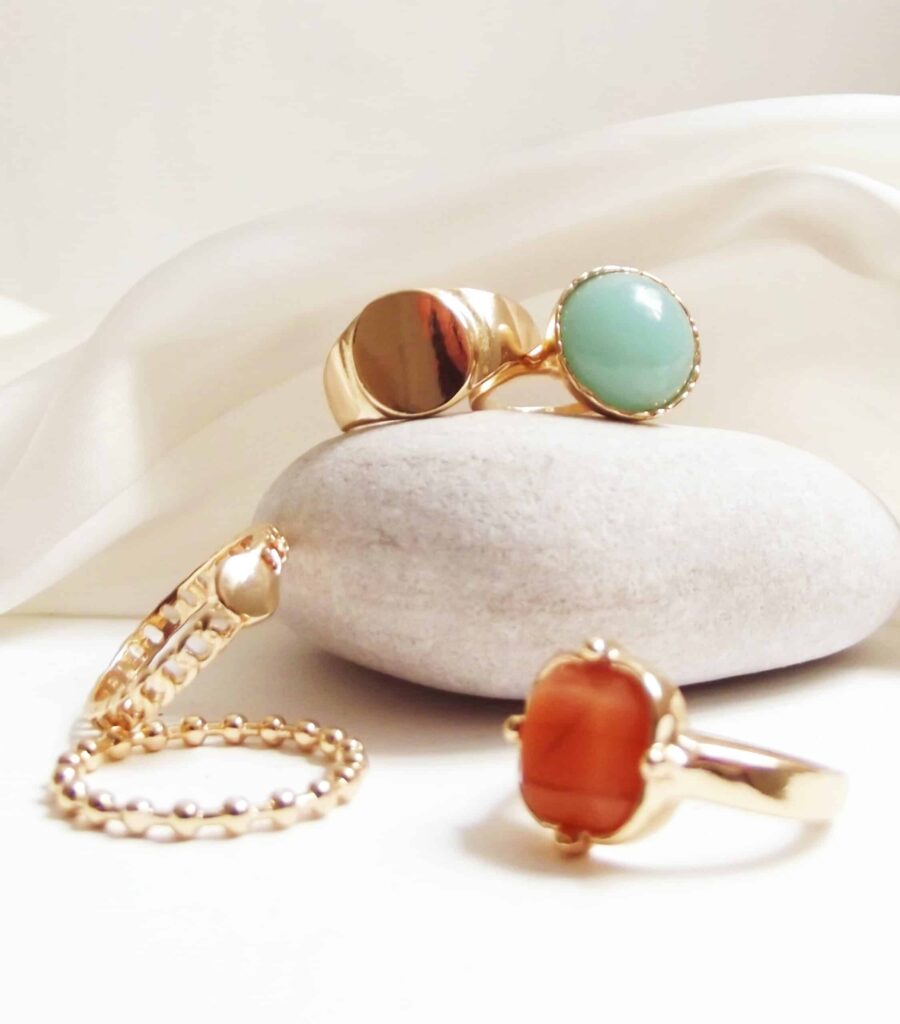
Jewellery is often an investment and, for many people, has a great sentimental value attached to the pieces. Therefore, it is important to take care of your jewellery to make sure they look their best for years to come. Whether you are trying to clean a silver ring, a cherished pearl necklace or a gold bracelet, follow this guide and take care of your jewellery with confidence.
General Care
A professional should regularly check jewellery for damage or wear. If you have any concerns about your jewellery condition, take it to a professional.
Here are a few tips on some of the things you can do to keep it in great shape:
- Take your jewellery off if you’re involved in any activity which could scratch, knock or damage it. If in any doubt, take it off and keep it safe.
- Take it off when you go to bed.
- Keep it well away from chemicals, especially chlorine. If it does come into contact with chemicals, rinse it in water immediately.
- Bathe and apply any lotions or perfumes before you put your jewellery on. Organic gemstones like pearls and opals are particularly vulnerable to acids, even perspiration.
- Store it separately, ideally in a soft-lined box or case, so that your favourite pieces don’t tangle, rub or scratch one another. Pearls in particular should be kept separately as they are easily scratched by hard gemstones.
- Make sure chains and necklaces are fastened when storing to avoid tangling.
- Remove jewellery while cooking and cleaning.
- When storing jewellery, please keep it away from sunlight, excessive heat or damp conditions.
Gemstone Cleaning
Gemstones are bought for their sparkle and colour, so it’s essential to keep them looking their best. However, it is important to know what type of gem you are cleaning and how to get it back to looking like new.
Many coloured gemstones have been treated to enhance their appearance. These treatments can negatively interact with some cleaning products and damage the jewellery. If in any doubt, take your jewellery to a jeweller for advice.
Although a gemstone may appear tough, many can be susceptible to heat. Whenever cleaning, make sure that you use warm water rather than hot or boiling water. Inclusions within gemstones can weaken their structure if aggressively cleaned. Gemstones, such as emeralds that have been oiled to improve colour, can be negatively affected by mechanical cleaning such as steam and ultrasonic cleaning.
For nearly all coloured gemstones cleaning with warm water, a couple of drops of washing-up liquid and a soft brush will be more than adequate. Make sure to avoid hard and rigid brushes. A toothbrush is usually an excellent tool due to head size and flexibility. If using a toothbrush, it is important to buy one labelled with a soft or extra-soft brush.
When cleaning malachite, use cool water as it is particularly sensitive to heat and hot water may damage the gemstone.
Cleaning Organic Gems
Organic gems like pearls and opal possess different chemical compositions to mineral gemstones like sapphires and diamonds. Because of this, they also require other methods of care. Most organic gems are much softer than mineral gemstones and liable to be scratched and damaged if not cared for correctly. Due to their chemical makeup, they are vulnerable to acids and many chemicals found in cleaning products. This brief guide should help you avoid damaging your peals, opals and amber jewellery.
How to clean pearl, coral and amber jewellery:
Do not submerge the gemstones in water. Instead, wet a soft cloth with warm water and gently rub each stone individually. Avoid pulling the stones through the cloth as this is liable to stretch or damage the string. If stubborn dirt remains on some of the gemstones, then a soft brush should help remove the grime. Be careful and go gently.
Dry the gemstones with a lint-free cloth. Excess moisture can build up in the drill holes and next to the knots causing discolouration. A hard blow with the breath or daubing with the cloth should remove this. Do not use a hairdryer to remove moisture, as the heat will damage the stones.
Never clean with steam, boiling or ultrasonic tools as these will irreversibly damage the gems.
Cleaning Gold
It doesn’t take long for gold jewellery to lose its shine. Fingerprints and a daily build-up of dirt can quickly dull even the brightest gold. Thankfully, we have some tips to help you to get it shining once again.
If the gold jewellery has gemstones or pearls, please be extra careful when cleaning the piece. Check out the rest of the guide for how best to clean the individual gems so that you don’t cause any damage to the jewellery.
A cleaning solution designed exclusively for jewellery is a safe option, but make sure any solution is intended for the correct precious metal or gemstone. If in doubt, it is best to stick to using the following steps:
- Add a few drops of washing-up liquid (or other mild degreasing solution) to a lukewarm bowl of water. Extreme temperature changes may damage the jewellery, so avoid hot or ice-cold water.
- Soak the jewellery for ten minutes to loosen any build-up of dirt.
- Gently clean with a soft-bristled brush such as an unused toothbrush.
- Make sure to clean the whole piece of jewellery and get into hard to reach places while being extra careful when cleaning fragile parts of the jewellery (for example, at a stone’s setting).
- Rinse thoroughly in clean water to remove soap residue and any other remnants of dirt.
- Dry gently with a lint-free cloth or leave on a cloth to air dry.
Gold is a very soft metal that is susceptible to scratching. Remember this fact during the cleaning and drying process and be as gentle as possible.
Cleaning Silver
Silver is subject to tarnishing over time, resulting in dull or even black jewellery. Tarnishing occurs when silver is exposed to oxygen and sulphur in the air. It is unavoidable, but, thankfully, it doesn’t damage the metal and can be removed easily with cleaning.
How to prevent tarnishing:
Simply wearing your silver jewellery will slow the process of tarnishing. Being careful with how you store and wear the silver will also help reduce the speed of tarnishing.
- Remove silver rings and bracelets when washing your hands. Residue from soap and hand gels can result in a dull surface.
- Keep silver jewellery in separate airtight bags.
- Avoid humid environments.
However, when the metal begins to look dull or starts to turn black, it is time to get the cleaning products out to get the jewellery looking like new.
How to clean silver:
The simplest way to clean silver is to buy a specialist cleaning solution or cloth. There are numerous examples on the market. Just make sure that they have been specifically designed for cleaning silver. Silver cleaning cloths should be soft and infused with anti-tarnishing agents.
If you don’t have specialist cleaners at home, then do not fear as there are household options to get your silver shining. A bowl of lukewarm water and a few drops of washing-up liquid will help remove tarnishing.
- Soak the silver jewellery for ten minutes in a bowl of warm water with a few drops of washing-up liquid.
- Gently scrub the silver with a soft, clean brush.
- Rinse in clean, warm water.
- Leave to air dry.
For more stubborn tarnishing, you can use a white vinegar and water mix.
- Mix equal parts of white vinegar and water in a bowl.
- Soak a clean toothbrush in the solution and gently brush the affected areas of silver.
- Rise and leave to air dry.
UK NAJ – National Association of Jewellers
